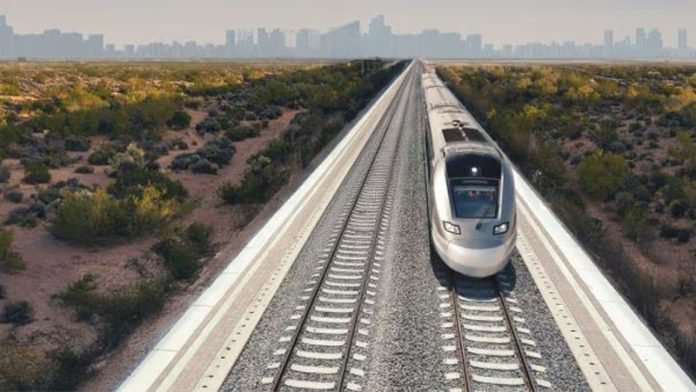A Bold Leap Toward the Future of UAE Travel
Dubai has always been synonymous with innovation, luxury, and ambition. Now, it’s about to add another milestone to its name—by 2026, the United Arab Emirates is expected to unveil its first-ever passenger railway system, marking a defining moment in the country’s transportation evolution.
This isn’t just about trains. It’s about convenience, sustainability, and regional connectivity on a scale never seen before in the Gulf. For the first time, residents and tourists alike will be able to experience seamless intercity rail travel across the UAE, cutting down travel time, reducing road traffic, and embracing a more environmentally friendly mode of transportation.
From Vision to Reality: The Journey So Far
The idea of a passenger railway system in the UAE has been circulating for over a decade, but 2026 will finally see the dream materialize. Spearheaded by top authorities in Dubai and supported by federal initiatives, the project aims to connect major emirates like Abu Dhabi, Dubai, Sharjah, Ras Al Khaimah, and Fujairah through a high-speed, modern railway line.

Imagine boarding a train in the heart of Abu Dhabi and arriving in Dubai in just under 50 minutes—without traffic jams, honking horns, or lengthy check-ins. That’s the future the country is investing in. And it’s happening sooner than many expected.
A New Chapter for Commuters and Tourists Alike
For daily commuters, the new passenger rail will be a game-changer. No longer bound by the stress of congested highways or long taxi rides, working professionals will be able to move between emirates with ease and efficiency. It’s not just about saving time—it’s about improving quality of life.

Tourists, too, will find the rail system a dream come true. Exploring the UAE’s diverse regions—be it the urban energy of Dubai, the cultural heritage of Sharjah, or the mountainous serenity of Fujairah—will become easier, quicker, and far more enjoyable.
This rail is not just about connecting cities. It’s about connecting people, experiences, and opportunities.
A Sustainable Move That Benefits All
One of the most significant aspects of the upcoming railway is its environmental promise. In a time where the world is increasingly aware of climate concerns, the UAE’s decision to develop a sustainable, low-emission transport system speaks volumes.
Authorities have emphasized the importance of reducing carbon footprints, and trains are a vital step in that direction. Compared to traditional car travel, rail systems emit far less CO₂ per passenger—making this initiative a win for both the public and the planet.
Moreover, with advanced engineering and design, the railway is expected to prioritize energy efficiency and safety. It’s a step forward in making the UAE’s infrastructure smarter and more responsible.
Designed for Speed, Comfort, and Modern Living
Dubai doesn’t do anything halfway—and the passenger railway is no exception. Authorities have confirmed that the train carriages will reflect the UAE’s high standards in comfort, design, and technology.
Passengers can expect world-class amenities, spacious seating, free Wi-Fi, entertainment systems, and quiet zones for those who want to work or relax. Whether you’re a student, a professional, a tourist, or a retiree—this railway aims to cater to everyone.
Even the stations themselves are expected to be architectural masterpieces, blending modern aesthetics with functionality. Think air-conditioned terminals, retail outlets, food courts, and seamless access to other public transport options like metros, taxis, and buses.
Economic and Social Impacts: A Ripple Effect of Growth
The railway’s impact will extend far beyond the transportation sector. By making intercity travel faster and easier, the project is expected to spur economic growth, boost real estate development, and open up job opportunities across various emirates.
Business owners will find new markets and talent pools within reach. Residents might consider relocating for better housing or lifestyle opportunities, knowing that distance will no longer be a barrier. And with increased tourism comes more spending, more events, and more global exposure for the UAE.
The project is also expected to support thousands of jobs in engineering, construction, logistics, and technology—further contributing to the country’s economic resilience.
A Testament to the UAE’s Visionary Spirit
What sets the UAE apart is its ability to turn futuristic ideas into tangible realities. From the Burj Khalifa to the Museum of the Future, from desert resorts to man-made islands—the country has never shied away from bold ventures. The passenger railway is just the latest addition to that legacy.
It reflects the leadership’s commitment to sustainable development, innovation, and citizen well-being. More than a transport upgrade, this railway is a symbol of what’s possible when ambition meets action.
What to Expect Before the 2026 Launch
While the launch is scheduled for 2026, several developments are expected over the next year. Trial runs, route testing, and final construction of stations will be taking place behind the scenes. Public awareness campaigns, early ticketing systems, and train schedules will also start rolling out closer to the launch date.
For now, authorities are focused on ensuring every detail—from technology to logistics—is flawlessly executed. The aim is to offer passengers not just a ride, but an experience they’ll want to repeat.
A Nation on the Move, Together
This upcoming railway isn’t just a transport project. It’s a cultural shift. It’s about rethinking how people live, work, and connect in the UAE. It’s about community. It’s about progress.
The countdown to 2026 has already begun—and with it, a wave of excitement, anticipation, and pride.
From the morning rush in Abu Dhabi to sunset strolls in Dubai, from business meetings in Sharjah to beach getaways in Fujairah—life in the UAE is about to get a whole lot easier, faster, and better.
All aboard for a brighter, bolder future.
Do follow UAE Stories on Instagram
Dubai’s RTA Opens New Tunnel to Ease Traffic, Cut Drive Time to Under 4 Minutes















